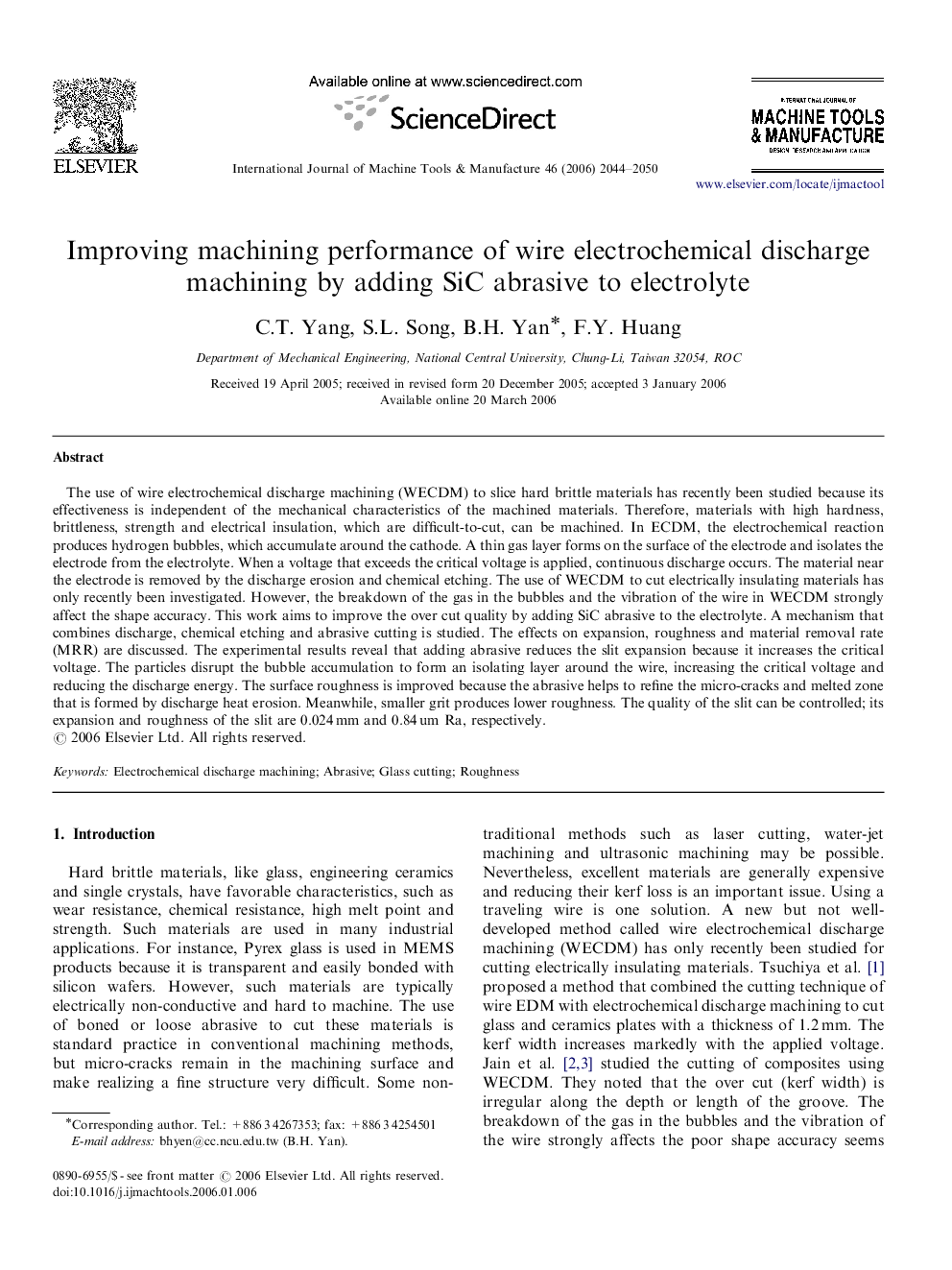| Article ID | Journal | Published Year | Pages | File Type |
|---|---|---|---|---|
| 781211 | International Journal of Machine Tools and Manufacture | 2006 | 7 Pages |
The use of wire electrochemical discharge machining (WECDM) to slice hard brittle materials has recently been studied because its effectiveness is independent of the mechanical characteristics of the machined materials. Therefore, materials with high hardness, brittleness, strength and electrical insulation, which are difficult-to-cut, can be machined. In ECDM, the electrochemical reaction produces hydrogen bubbles, which accumulate around the cathode. A thin gas layer forms on the surface of the electrode and isolates the electrode from the electrolyte. When a voltage that exceeds the critical voltage is applied, continuous discharge occurs. The material near the electrode is removed by the discharge erosion and chemical etching. The use of WECDM to cut electrically insulating materials has only recently been investigated. However, the breakdown of the gas in the bubbles and the vibration of the wire in WECDM strongly affect the shape accuracy. This work aims to improve the over cut quality by adding SiC abrasive to the electrolyte. A mechanism that combines discharge, chemical etching and abrasive cutting is studied. The effects on expansion, roughness and material removal rate (MRR) are discussed. The experimental results reveal that adding abrasive reduces the slit expansion because it increases the critical voltage. The particles disrupt the bubble accumulation to form an isolating layer around the wire, increasing the critical voltage and reducing the discharge energy. The surface roughness is improved because the abrasive helps to refine the micro-cracks and melted zone that is formed by discharge heat erosion. Meanwhile, smaller grit produces lower roughness. The quality of the slit can be controlled; its expansion and roughness of the slit are 0.024 mm and 0.84 um Ra, respectively.
